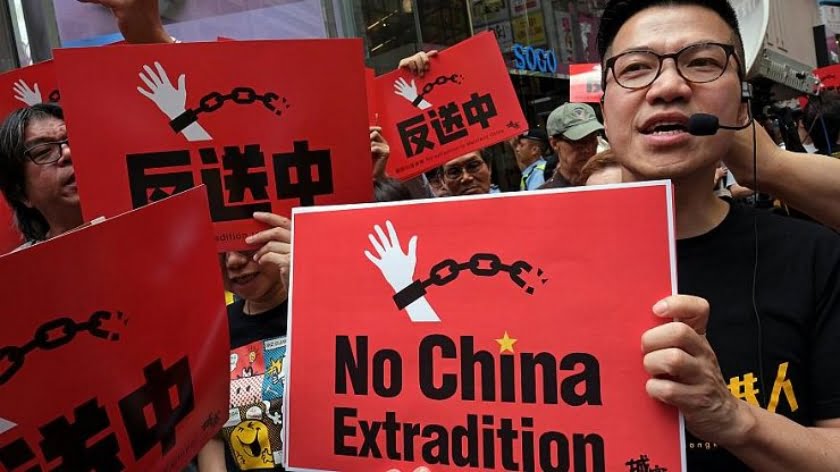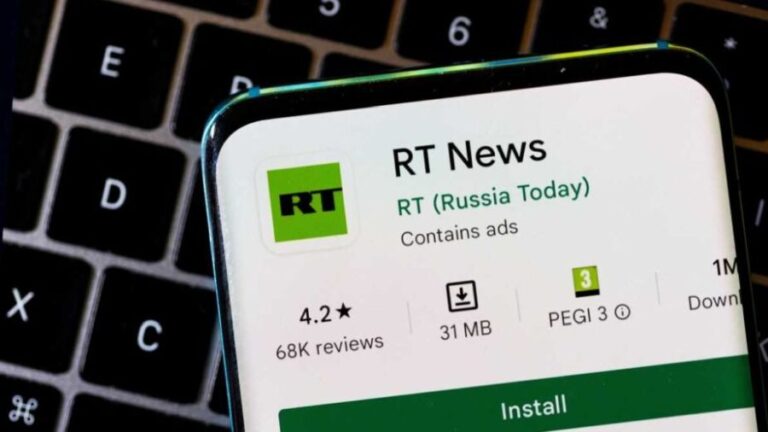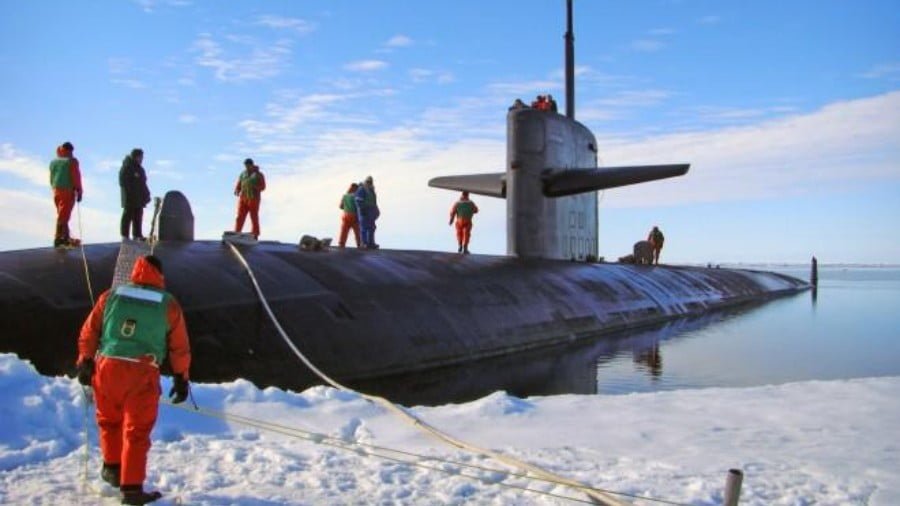Follow the Money Trail Behind the Hong Kong Protests
The demonstrations in Hong Kong, now an open confrontation with the People’s Republic of China, have a global impact. What are the forces behind this movement? What provides the funds and who stands to benefit?
***
The increasingly violent demonstrations in Hong Kong are completely embraced and enthusiastically supported in the U.S. corporate media and all the imperialist political parties in the U.S. and Britain. This should be a danger sign to everyone fighting for change and for social progress. U.S. imperialism is never disinterested or neutral.
The disruptive actions involve helmeted and masked protesters using gasoline bombs, flaming bricks, arson and steel bars, random attacks on buses, and airport and mass transit shutdowns. Among the most provocative acts was an organized break-in at the Hong Kong legislature where “activists” vandalized the building and hung the British Union Jack flag.
U.S., British and Hong Kong’s colonial flags are prominent in these confrontations, along with defaced flags and other symbols of People’s China.
The New York Times described the airport shutdown:
“The protests at the airport have been deeply tactical, as the largely leaderless movement strikes at a vital economic artery. Hong Kong International Airport, which opened in 1998, the year after China reclaimed the territory from Britain, serves as a gateway to the rest of Asia. Sleek and well run, the airport accommodates nearly 75 million passengers a year and handles more than 5.1 million metric tons of cargo.” (Aug. 14)
U.S. media have consistently labeled these violent actions “pro-democracy.” But are they?
Even if the leaders of these reactionary actions decide to pull back from the brink and recalibrate their tactics, based on the Chinese government’s strong warnings, it is important to understand a movement that has such strong U.S. support.
China has a right to intervene
It must be strongly stated that China is not invading Hong Kong if it moves against these violent disruptions. Hong Kong is part of China. This is an internal matter, and the call for independence for Hong Kong is an open attack on China’s national sovereignty.
Under Hong Kong’s Basic Law, the constitution for the city, the government is legally allowed to request help from the Chinese People’s Liberation Army.
The Chinese government has announced that it will intervene militarily to defend China’s sovereignty. Top government officials have labeled the most extreme acts as “terrorism” and denounced U.S. support. Several times officials raised the analogy to the Western “color revolutions” that violently overturned governments in Serbia, Ukraine, Libya and Haiti and were attempted in Venezuela and Syria.
“The ideologues in Western governments never cease in their efforts to engineer unrest against governments that are not to their liking, even though their actions have caused misery and chaos in country after country in Latin America, Africa, the Middle East and Asia. Now they are trying the same trick in China,” China Daily explained on July 3.

Liu Xiaoming, China’s ambassador to Britain, told reporters that their country was still acting as Hong Kong’s colonial master. (nbcnews.com, July 4)
“A spokeswoman for China’s Foreign Ministry claimed Tuesday that recent comments from American lawmakers Pelosi (D-Ca.) and McConnell (R-Ky.) demonstrate that Washington’s real goal is to incite chaos in the city,” according to CNBC. “By neglecting and distorting the truth, they whitewashed violent crimes as a struggle for human rights and freedom” (Aug. 14)
Where is U.S. support for other resistance?
Hong Kong police are denounced in the U.S. media for violence, but actually have shown great restraint. Despite months of violent confrontations, with flaming bottles constantly thrown, no one has been killed.
There is no such favorable media coverage or support from U.S. politicians for demonstrations of desperate workers and peasants in Honduras, Haiti or the Philippines, or for the yellow vest movement in France. There is never an official condemnation when demonstrators are killed in Yemen or Kashmir or in weekly demonstrations in Gaza against Israeli occupation.
These struggles receive barely a mention, although in every case scores of people have been killed by police, targeted for assassination or dissappeared.
While Hong Kong protests receive widespread attention, there is no similar coverage of or political support for Black Lives Matter demonstrations in the U.S. or the masses protesting racist Immigration and Customs Enforcement raids and roundups of migrants.
U.S. pressure continues
Despite China’s warnings of possible martial law, strict curfews and military intervention to restore order, protesters have shown no signs of retreat. The U.S. and Britain are determined to propel forward those hostile political forces they have cultivated over the past two decades.
The escalating demonstrations are linked to the U.S. trade war, tariffs and military encirclement of China. Four hundred — half — of the 800 U.S. overseas military bases surround China. Aircraft carriers, destroyers, nuclear submarines, jet aircraft, Terminal High Altitude Area Defense missile batteries, and satellite surveillance infrastructures are positioned in the South China Sea, close to Hong Kong. Media demonization is needed to justify and intensify this military presence.
Encouraging the demonstrations goes hand-in-hand with international efforts to bar Huawei 5G technology, the cancelation of a joint study of cancer and the arrest of Chinese corporate officers. All these belligerent acts are designed to exert maximum pressure on China, divide the leadership, destabilize economic development and weaken China’s resolve to maintain any socialist planning.
Martial law in Hong Kong, a major financial center, especially for international investment funds coming into China, would impact China’s development.
Capitalist economic “freedom”
British imperialism, in the 155 years it ruled Hong Kong, denied rights to millions of workers. There was no elected government, no right to a minimum wage, unions, decent housing or health care, and certainly no freedom of the press or freedom of speech. These basic democratic rights were not even on the books in colonial Hong Kong.
For the past 25 years, including this year, Hong Kong has been ranked No. 1 in the right-wing Heritage Foundation’s list of countries with the “greatest economic freedom” — meaning the least restraints on capitalist profit taking. Hong Kong’s ranking is based on low taxes and light regulations, the strongest property rights and business freedom, and “openness to global commerce and vibrant entrepreneurial climate … no restrictions on foreign banks.” For this Hong Kong is the “freest society in the world.”
This “freedom” means the world’s highest rents and the greatest gap between the super-rich and the desperately poor and homeless. This is what Hong Kong youth face today. But the youth are consciously being misdirected to blame the city administration for the conditions Hong Kong is locked into under the “One Country, Two Systems agreement.”
An unequal colonial treaty
Hong Kong is stolen land. This spectacular deep water port in the South China Sea at the mouth of the Pearl River, a major waterway in south China, was seized by Britain in the 1842 Opium Wars. After negotiations with Britain had dragged on through the 1980s, the British imposed another unequal treaty on the People’s Republic of China.
Under the 1997 “One Country, Two Systems” agreement that officially returned Hong Kong, Kowloon and the New Territories to the PRC, Britain and China agreed to leave “the previous capitalist system” in place for 50 years.
China, determined to reassert its sovereignty over land stolen by imperialist invasion, also needed funds for development. Most money in Asia moved through the Hong Kong banking system. So in 1997 China was anxious to reach a smooth transition that would not destabilize the transfer of investment funds into the 99.5 percent of China that had previously been denied development funds. Since the victorious Chinese Revolution in 1949, China had been sanctioned and blockaded from accessing Western investment and technology.
U.S. and British imperialism took full advantage of the 1997 concession that maintained their economic control of the former colony. Their hope was that Hong Kong could serve, as it had in the past, as an economic battering ram into China.
Their hopes were not realized. In 1997 Hong Kong’s gross domestic product was 27 percent of China’s gross domestic product. It is now a mere 3 percent and falling. Much to U.S. and British frustration, the world’s largest banks are now in China and they are state-owned banks.
What confounds the capitalist class, far more than China’s incredible growth, is that the top 12 Chinese companies on U.S. Fortune 500 list are all state-owned and state-subsidized. They include massive oil, solar energy, telecommunications, engineering and construction companies, banks and the auto industry. (Fortune.com, July 22, 2015)
U.S. corporate power is deeply threatened by China’s level of development through the Belt and Road Initiative and its growing position in international trade and investment.
U.S., Britain built a network of collaborators
When Britain and China signed the One Country, Two Systems agreement, all foreign intervention and colonial claims on Hong Kong were supposed to end. Full sovereignty was to return to China.
However, U.S. and British efforts to undercut Hong Kong’s return began in advance of the signing. Just before the transfer of sovereignty, Britain hastily set up, after 150 years of appointed officials, a partially elected, although still mainly appointed, government. They quickly established and funded political parties, composed of their loyal collaborators.
Millions of dollars were openly and secretly funneled into a whole network of protected social service organizations, political parties, media and social media, student and youth organizations, and labor unions established to undercut support for China and the Communist Party of China.
The Hong Kong Confederation of Trade Unions receives U.S. National Endowment for Democracy (NED) funding, along with British support. It promotes “pro-democracy, independent unions” throughout China. The HKCTU was established in 1990 to counter and undercut the Hong Kong Federation of Trade Unions founded in 1948, which is still the largest union organization with 410,000 members.
The HKFTU suffered years of brutal repression under British colonial rule as it fought for basic protection of workers’ rights. A strike organized by the HKFTU shook British colonial rule in 1967. The strike became a citywide rebellion sparked by mass layoffs of workers from the plastic flower factory. British colonial authorities harshly suppressed the uprising, resulting in 51 deaths and hundreds injured and disappeared. The HKFTU supports China and opposes the reactionary demonstrations.
NED funding = CIA support
Allen Weinstein, a founder of the NED, told the Washington Post in 1991, “A lot of what we do today was done covertly 25 years ago by the CIA.” (Sept. 21, 1991) The NED funds, coordinates and weaponizes nongovernmental organizations and social organizations with the capacity to put tens of thousands of misdirected, idealistic and alienated youth on the streets.
Funding from the NED, the Ford, Rockefeller, Soros and numerous other corporate foundations, christian churches of every denomination, and generous British funding, is behind this hostile, subversive network orchestrating the Hong Kong protests.
The NED bankrolls the Hong Kong Human Rights Movement, the Hong Kong Journalists Association, the Civic Party, Labor Party and Democratic Party. They are members of the Civil Human Rights Front that coordinates the demonstrations.
This role of the NED in China is increasingly harder to obscure. Alexander Rubinstein reported in “American Gov’t, NGOs Fuel and Fund Hong Kong Anti-Extradition Protests” (mintpressnews.com, June 13): “It is inconceivable that the organizers of the protests are unaware of the NED ties to some of its members.” (tinyurl.com/y6nhmapz)
The goal is to promote a hostile and suspicious attitude toward China and toward communism and to foster the false concept of a past democratic Hong Kong with a distinct identity. China Daily warns:
“In recent years, there have been warnings that color revolutions are emerging as a new form of warfare employed by the West to destabilize certain countries.” (Aug. 12)
Which system works better?
The Aug. 13 New York Times refers to Hong Kong as a “bastion of civil liberties” to counter “Beijing’s brand of authoritarianism.”
British colonial past is deeply mythologized. Twenty-two years of constant nostalgia for this past, supposedly glorious time has influenced increasingly impoverished youth.
Despite decades of multimillion-dollar Western funding, Hong Kong has a poverty rate of 20 percent (23.1 percent for children) compared to less than 1 percent in mainland China. In the past 20 years, mainland China has lifted countless millions of people out of poverty
Just across the river from Hong Kong sits the city of Shenzhen. It is one of the Special Economic Zones established to lure Western technology. These zones, originally with thousands of labor-intensive factories and millions of workers earning low wages, were centers of capitalist exploitation and enormous profits for U.S. and other global capitalists.
Shenzhen grew from a city of 30,000 in 1979 to a megacity of 20 million, with the largest migrant population in China. Shenzhen had a population three times the size of Hong Kong. With investments via Hong Kong, this new city became a massive polluted factory town with sweatshops spewing out clouds of dark toxic smoke.
In the past five years, through city and national urban planning, Shenzhen is today one of the most livable cities in China, with extensive parks, tree-lined streets and the largest fleet of electric buses in the world (16,000), along with all-electric cabs. Shenzhen aims to have 80 percent of its new buildings green-certified by 2020. It is full of apartment blocks, office towers and modern factories with advanced equipment manufacturing, robotics, automation and giant tech startups.
For the last 10 years wages have been stagnant in Hong Kong while rents have increased 300 percent; it is the most expensive city in the world. In Shenzhen, wages have increased 8 percent every year, and more than 1 million new, public, green housing units at low rates are nearing completion.
The U.S. is demanding that China abandon state support of its industries, the ownership of its banks and national planning. But contrasting the decay, growing poverty and intense alienation in Hong Kong with the green vibrant city of Shenzhen across the river shows that there are two choices for China today, including the angry forces mobilized in Hong Kong: modern socialist planning or a return to the super-exploitation and imperialist domination of the colonial past.
For decades Britain and the U.S. used the people of Hong Kong for cheap labor. Now they are using the same population for cheap political propaganda. This cynical maneuver is just one more weapon in a desperate effort to disrupt China’s further development.
U.S. corporate power is incapable of meeting any of the desperate needs for housing, health care, education and a healthy environment for people here. Instead, in a relentless drive for profits, enormous resources are squandered on militarism to threaten countries around the world.
We must demand: U.S. Hands Off China! U.S. Out of Hong Kong!
By Sara Flounders
Source: Workers World







